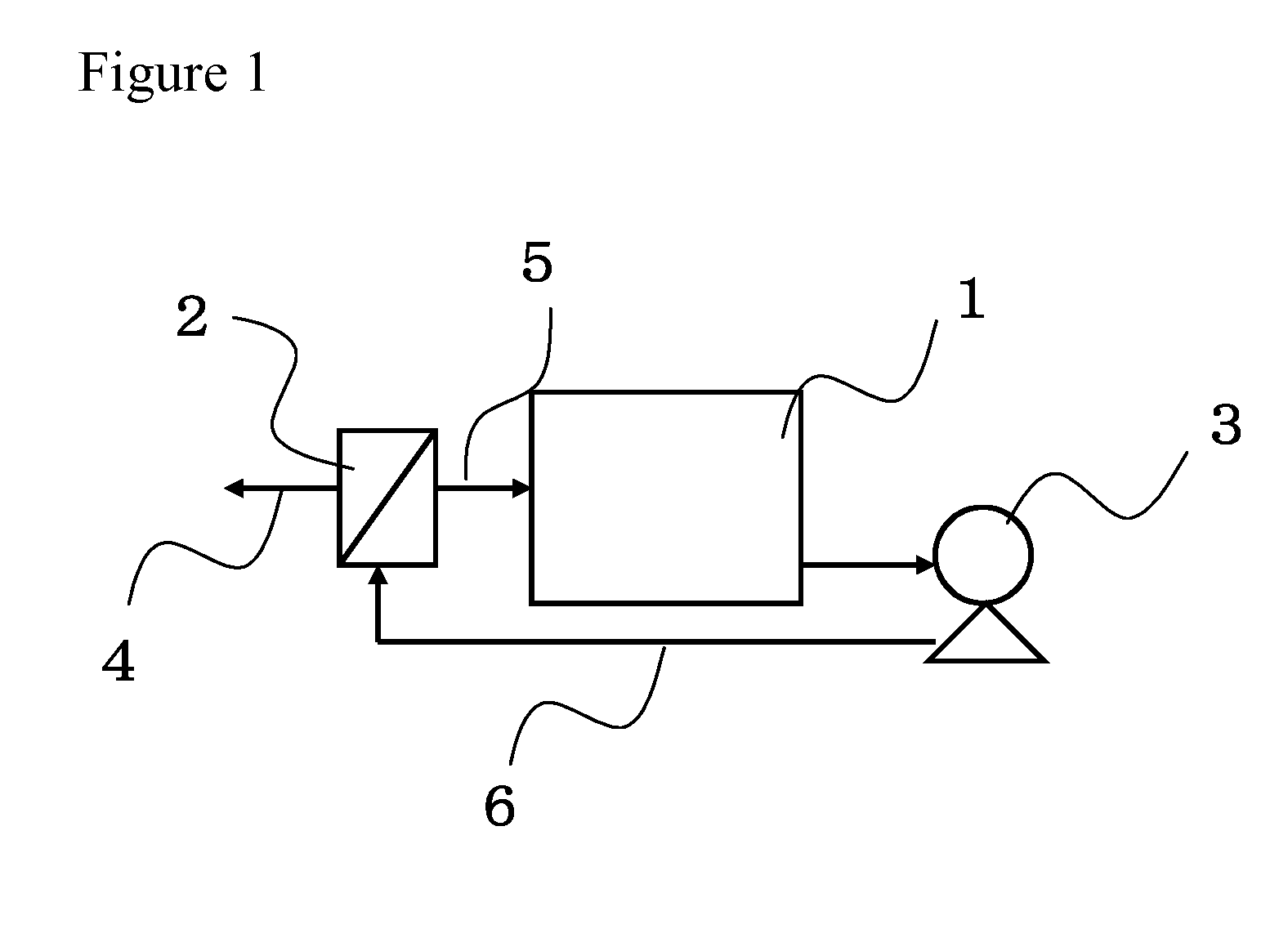Method for producing pure sugar solution, and method for producing chemical product
a technology of pure sugar and chemical product, which is applied in the direction of glucose production, membranes, reverse osmosis, etc., can solve the problems of reducing the yield of fermentation products, failing to work effectively in removing organic acids including formic acid, acetic acid, and rising prices of their products, so as to achieve high purity, long-term stable process, and high yield
- Summary
- Abstract
- Description
- Claims
- Application Information
AI Technical Summary
Benefits of technology
Problems solved by technology
Method used
Image
Examples
reference example 1
Analysis Method for Monosaccharide Concentration
[0136]The concentration of a monosaccharide (glucose and xylose) contained in an aqueous sugar solution produced was determined from comparison with authentic samples under the HPLC conditions listed below.[0137]Column: Luna NH2 (manufactured by Phenomenex)[0138]Mobile phase: ratio of ultrapure water to acetonitrile=25:75 (flow rate 0.6 ml / min)[0139]Reaction liquid: none[0140]Detection method: RI (differential refractive index)[0141]Temperature: 30° C.
reference example 2
Analysis Method for Concentration of Fermentation Impeding Substances
[0142]Furan based fermentation impeding substances (HMF, furfural) and phenolic fermentation impeding substances (vanillin, acetovanillin) contained in an aqueous sugar solution were determined from comparison with authentic samples under the HPLC conditions listed below.[0143]Column: Synergi HidroRP 4.6 mm×250 mm (manufactured by Phenomenex)[0144]Mobile phase: acetonitrile—0.1% H3PO4 (flow rate 1.0 ml / min)[0145]Detection method: UV (283 nm)[0146]Temperature: 40° C.
[0147]Organic acid based fermentation impeding substances (acetic acid, formic acid) contained in an aqueous sugar solution were quantitatively determined from comparison with authentic samples under the HPLC conditions listed below.[0148]Column: Shim-Pack SPR-H and Shim-Pack CR101H (supplied by Shimadzu Corporation) connected in series[0149]Mobile phase: 5 mM p-toluene sulfonic acid (flow rate 0.8 ml / min)[0150]Reaction liquid: 5 mM p-toluene sulfonic ac...
reference example 3
Measuring Method for Turbidity
[0153]Turbidity of an aqueous sugar solution was determined using an advanced indoor turbidity meter manufactured by HACH. Here, since this turbidity meter was designed only for measuring turbidity of 1,000 NTU or less, an aqueous sugar solution was diluted, as needed, with distilled water before making measurements.
PUM
| Property | Measurement | Unit |
|---|---|---|
| temperature | aaaaa | aaaaa |
| temperature | aaaaa | aaaaa |
| temperature | aaaaa | aaaaa |
Abstract
Description
Claims
Application Information
 Login to View More
Login to View More - R&D
- Intellectual Property
- Life Sciences
- Materials
- Tech Scout
- Unparalleled Data Quality
- Higher Quality Content
- 60% Fewer Hallucinations
Browse by: Latest US Patents, China's latest patents, Technical Efficacy Thesaurus, Application Domain, Technology Topic, Popular Technical Reports.
© 2025 PatSnap. All rights reserved.Legal|Privacy policy|Modern Slavery Act Transparency Statement|Sitemap|About US| Contact US: help@patsnap.com



